The question is -- what happens to x?
The answer varies depending on theory vs. implementation.
In theory, yes, x is kept alive, because the closure (the anonymous function) has a reference to the binding object of the context of the call to foo, which includes x.
In practice, modern JavaScript engines are quite smart. If they can prove to themselves that x cannot be referenced from the closure, they can leave it out. The degree to which they do that will vary from engine to engine. Example: V8 (the engine in Chrome and elsewhere) will start out with x, y, and even the object that x refers to on the stack, not the heap; then when exiting foo, it looks to see what things still have outstanding references, and moves those to the heap. Then it pops the stack pointer, and the other things don't exist anymore. :-)
So, how can they prove it? Basically, if the code in the closure doesn't refer to it and doesn't use eval or new Function, the JavaScript engine is likely to be able to know that x isn't needed.
If you need to be sure that even if x still exists, the object is available for GC even on older browsers that might be literal (dumb) about it, you can do this:
x = undefined;
That means nothing keeps a reference to the object x used to refer to. So even though x still exists, at least the object it referred to is ready for reaping. And it's harmless. But again, modern engines will optimize things for you, I wouldn't worry about it unless you were faced with a specific performance problem and tracked it down to some code allocating large objects that aren't referenced once the function returns, but don't seem to be getting cleaned up.
Unfortunately, as you pointed out below, there are limits to this, such as the one mentioned in this question. But it's not all doom and gloom, see below under the profile snapshot for what you can do...
Let's look this code in V8, using Chrome's heap snapshot feature:
function UsedFlagClass_NoFunction() {}
function UnusedFlagClass_NoFunction() {}
function build_NoFunction() {
var notused = new UnusedFlagClass_NoFunction();
var used = new UsedFlagClass_NoFunction();
return function() { return used; };
}
function UsedFlagClass_FuncDecl() {}
function UnusedFlagClass_FuncDecl() {}
function build_FuncDecl() {
var notused = new UnusedFlagClass_FuncDecl();
var used = new UsedFlagClass_FuncDecl();
function unreachable() { notused; }
return function() { return used; };
}
function UsedFlagClass_FuncExpr() {}
function UnusedFlagClass_FuncExpr() {}
function build_FuncExpr() {
var notused = new UnusedFlagClass_FuncExpr();
var used = new UsedFlagClass_FuncExpr();
var unreachable = function() { notused; };
return function() { return used; };
}
window.noFunction = build_NoFunction();
window.funcDecl = build_FuncDecl();
window.funcExpr = build_FuncExpr();
And here's the expanded heap snapshot:

When processing the build_NoFunction function, V8 successfully identifies that the object referenced from notused cannot be reached and gets rid of it, but it doesn't do so in either of the other scenarios, despite the fact that unreachable cannot be reached, and therefore notused cannot be reached through it.
So what can we do to avoid this kind of unnecessary memory consumption?
Well, for anything that can be handled via static analysis, we can throw a JavaScript-to-JavaScript compiler at it, like Google's Closure Compiler. Even in "simple" mode, the beautified result of "compiling" the code above with Closure Compiler looks like this:
function UsedFlagClass_NoFunction() {}
function UnusedFlagClass_NoFunction() {}
function build_NoFunction() {
new UnusedFlagClass_NoFunction;
var a = new UsedFlagClass_NoFunction;
return function () {
return a
}
}
function UsedFlagClass_FuncDecl() {}
function UnusedFlagClass_FuncDecl() {}
function build_FuncDecl() {
new UnusedFlagClass_FuncDecl;
var a = new UsedFlagClass_FuncDecl;
return function () {
return a
}
}
function UsedFlagClass_FuncExpr() {}
function UnusedFlagClass_FuncExpr() {}
function build_FuncExpr() {
new UnusedFlagClass_FuncExpr;
var a = new UsedFlagClass_FuncExpr;
return function () {
return a
}
}
window.noFunction = build_NoFunction();
window.funcDecl = build_FuncDecl();
window.funcExpr = build_FuncExpr();
As you can see, static analysis told CC that unreachable was dead code, and so it removed it entirely.
But of course, you probably used unreachable for something during the course of the function, and just don't need it after the function completes. It's not dead code, but it is code you don't need when the function ends. In that case, you have to resort to:
unused = undefined;
at the end. Since you don't need the function anymore, you might also release it:
unused = unreachable = undefined;
(Yes, you can do that, even when it was created with a function declaration.)
And no, sadly, just doing:
unreachable = undefined;
...doesn't succeed (as of this writing) in making V8 figure out that unused can be cleaned up. :-(
